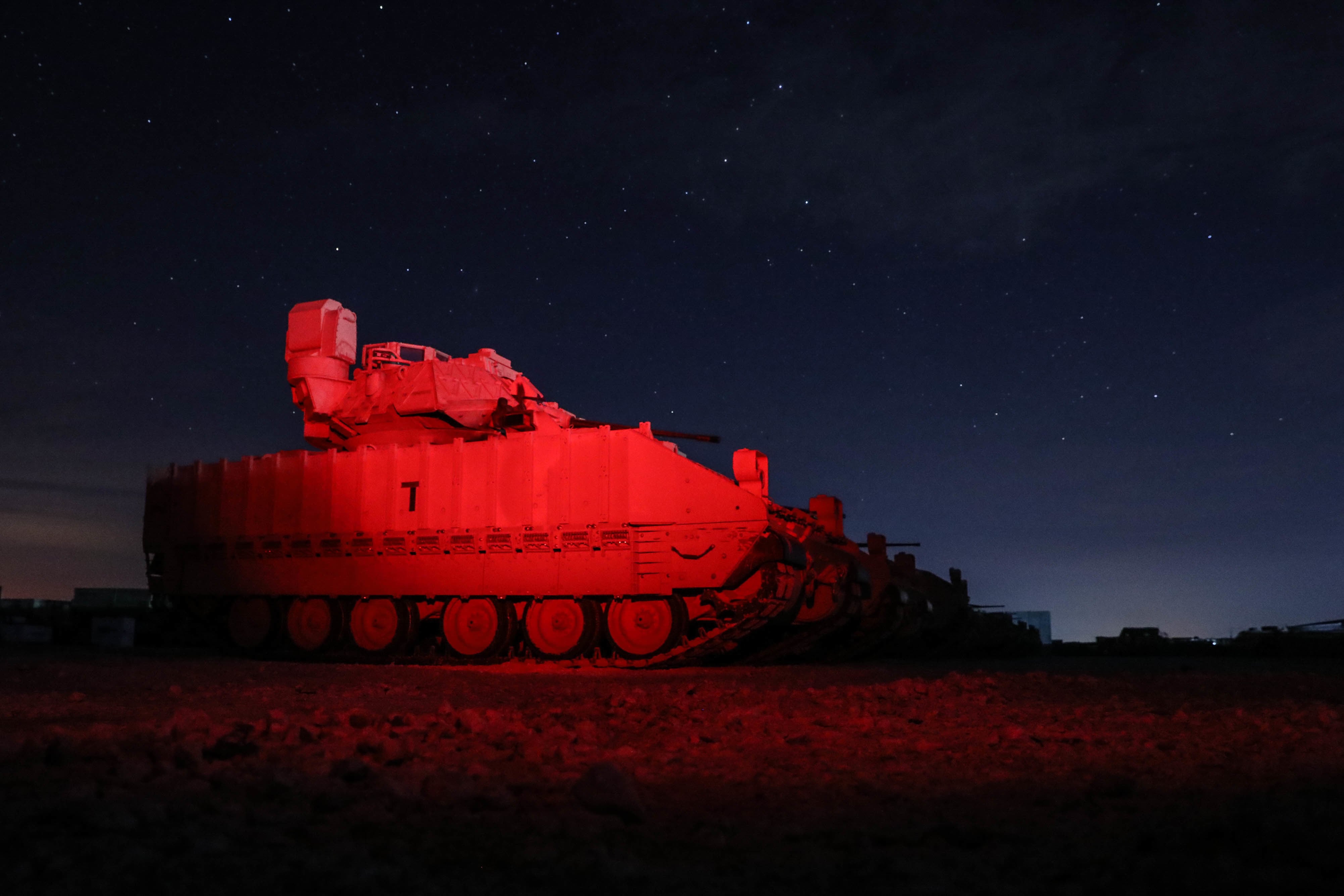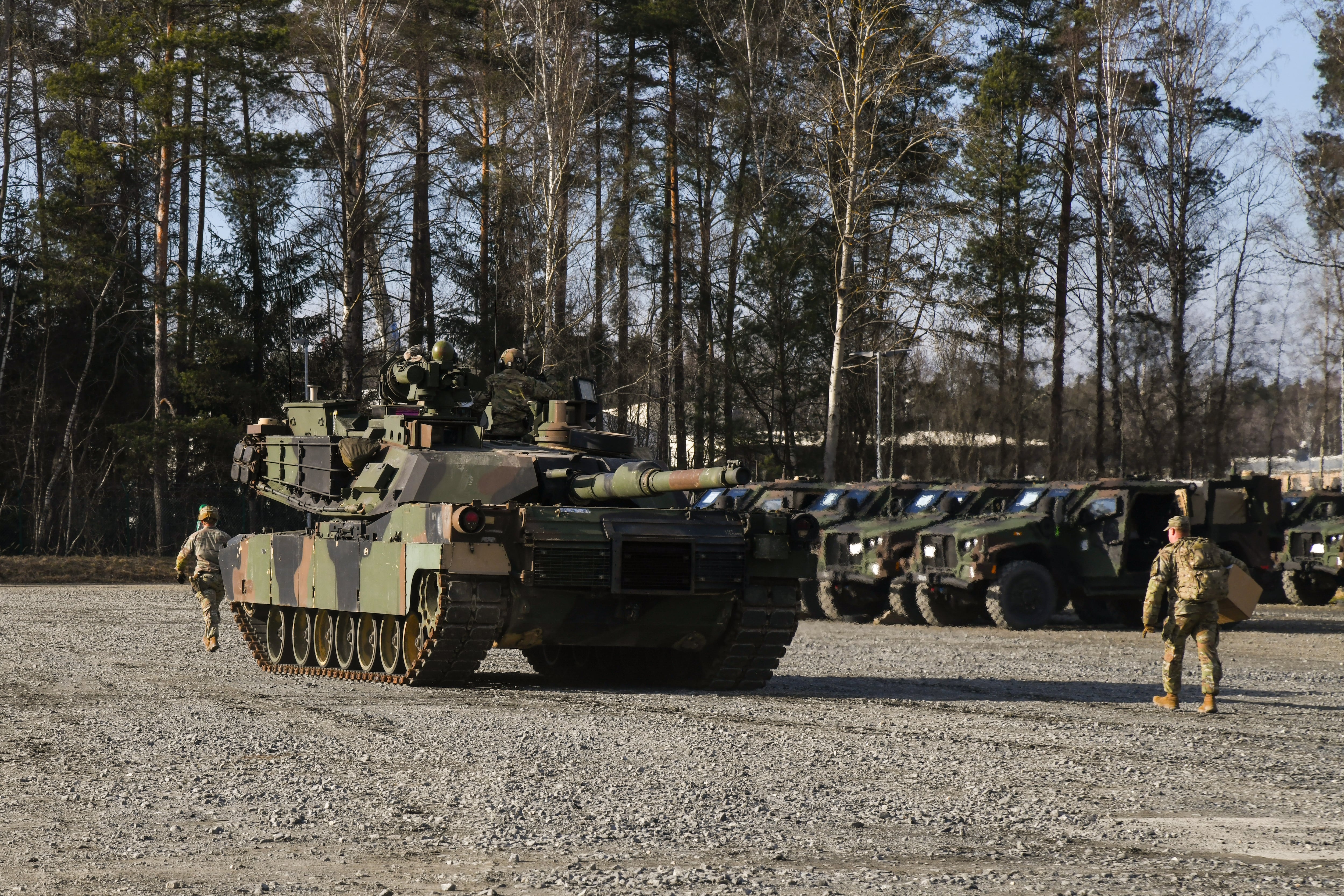FORT STEWART, Ga. — Sergeant Major of the Army Michael Grinston faced a math problem when fielding questions at a town hall for families of deployed 3rd Infantry Division soldiers Wednesday evening: how many armored brigade combat teams does the Army have, and how many does it need?
According to a force structure expert, the answer could be grim for members of the service’s 11 active component and five National Guard ABCTs. If current mission requirements — totaling nearly five ABCTs worldwide — hold without a change in force structure, their operational tempo could see a major increase, said Mark F. Cancian, a senior adviser at the Center for Strategic and International Studies.
“If we tried to maintain all of those...I think the [operational tempo] would be very severe,” Cancian told Army Times in a phone interview.
Service officials said they’re always monitoring issues like these to see how unit deployments impact the force at large.
“While the Army continually assesses its force structure and forward posture, we have no announcements to make at this time,” Army spokesman Jason Waggoner told Army Times.
The Army currently has just under five ABCTs committed around the world. In recent years, the Army has only needed to have three overseas at any given time.
- 1st ABCT, 1st Infantry Division has been in Europe since July 2021 as part of a now indefinitely extended Atlantic Resolve rotation.
- 3rd ABCT, 4th Infantry Division was scheduled to replace the 1st ID unit on Atlantic Resolve this spring, and Netherlands military officials recently said their equipment will arrive in Europe “the last week of March.”
- 1st ABCT, 3rd Infantry Division rapidly deployed to Europe after the Ukraine invasion, falling in on the service’s pre-positioned tank and Bradley stocks in the region.
- 1st ABCT, 1st Armored Division arrived in South Korea and uncased its colors on March 10 for a nine-month rotation.
- Elements of the Idaho National Guard’s 116th Cavalry Brigade Combat Team, including the 1st Combined Arms Battalion, 163rd Cavalry Regiment, are currently positioned throughout the Central Command area of responsibility supporting Operation Spartan Shield and the counter-ISIS campaign.
The soldiers of the 3rd Infantry Division’s 1st ABCT were barely home for six months from a nine-month rotation to South Korea before they were ordered to Europe in the wake of Russia’s invasion of Ukraine. Family members were frustrated by the quick turnaround.
It’s not yet clear whether the Army will be asked to maintain three brigades in Europe long-term, Grinston told them. But if that becomes an enduring requirement, he said, “in order to get three [ABCTs deployed], you need nine.”
“Somebody has got to replace you, and somebody just came back,” he said, noting the active component only has 11 ABCTs. “We have other commitments for our [ABCTs] in the world right now. You can see how this math is going, right?”
Currently, Guard troops are unable to participate in the European surge. Army planners are still determining if, and under what legal mobilization authorities, part-time troops could deploy.
That means the Regular Army currently has only 11 armor brigades to fulfill demand for four ABCTs — since the Guard handles the Spartan Shield mission. That could leave the service struggling to maintain the Defense Department’s 1:2 minimum deployment-to-dwell time ratio, although the Korea mission does not count as deployment time and it’s not yet clear whether the Europe missions will count as deployments.
More ABCTs? Forward-stationing?
According to Cancian, who is also a retired Marine Corps colonel, the Army could reduce its burden by permanently stationing a brigade in Europe or creating a 12th active duty ABCT. Another option could be to reduce the service’s global commitments — such as ending the CENTCOM armor mission — he said.

The Army once had as many as seven armor brigades in Europe at the height of the Cold War, but they were gradually drawn down, and the final Europe-stationed armor brigade was inactivated in 2013.
“The pretty obvious option would be to make one of the brigades [in Europe] permanent,” Cancian said. The drawback is the cost of building “a U.S. base with all of the support activities — families, the housing and everything else.”
Although there are “a lot of downsides” to that approach, Cancian added. “We can’t ignore the fact that this could be a very long-term competition and rotational units [aren’t] going to be adequate.”
Cancian noted that countries like Poland and Lithuania have been soliciting a permanent U.S. armor presence and would likely help subsidize the cost of infrastructure.
The force structure expert also explained that there are three ways to create an ABCT: getting Congress to increase the Army’s personnel by enough to create a new brigade, cutting personnel in various corners of the service to free up authorized end strength to stand up a new ABCT, or convert an existing infantry or Stryker BCT into an ABCT.
The Army has converted three BCTs to ABCTs since 2016.
But none of these options are cheap, Cancian said, and he thinks the service is unlikely to get more personnel in the fiscal 2023 budget. Nor does he think the Army will be able to find enough personnel to cut from existing authorizations in order to form a 12th ABCT.
That leaves conversion as the most likely path, in his eyes, should the Army not want to forward-station a brigade.
Ultimately, the issue depends on whether the armor brigades are needed in Europe long-term, and if the budget math will change because of the crisis. Cancian pointed to the upcoming release of the fiscal 2023 budget plan as an important indicator of the service’s intentions for addressing the potential ABCT shortage.
“We’ll see what comes out of the [FY23] budget and the associated five-year plan...[previously,] many strategists would reduce the tank and Bradley programs to pay for other ones,” he said. “In the budget now, I would expect that...they would compete relative [to other programs] much better than they would have...a month ago. We’ll get some insights.”
Editor’s note: This story was updated March 22, 2022, at 3 p.m. with a statement from an Army spokesman.
Davis Winkie covers the Army for Military Times. He studied history at Vanderbilt and UNC-Chapel Hill, and served five years in the Army Guard. His investigations earned the Society of Professional Journalists' 2023 Sunshine Award and consecutive Military Reporters and Editors honors, among others. Davis was also a 2022 Livingston Awards finalist.





